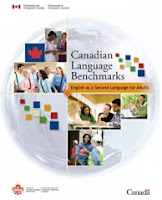The
handout clearly identifies the skill, competency area, CLB levels and abilities for students talking on the phone. I have tried to present it in “student friendly” language, based
on my interpretation of the CLB 2012.
Whatever the phone task you are using to assess students’ abilities:
· Print off the first two pages
· Add the title/ task & date under “On the Phone”
· Photocopy
TIPS
… Arrange pairs so that
students sit/stand back to back. That way they can’t see each other, or use
body language to communicate. You can record their sessions if you like, but
try your best to complete your assessments in real time. That way, you are paid
for your valuable time and skill.
As
this is a Microsoft Word File, please feel free to modify to your needs.
You may want to:
- Delete or white-out the information for a level you are not assessing
- Add specific language / actions you have taught and want to assess
- Enlarge/ alter the students’ reflection area
Please
let me know if this works for you – or if you have another idea.
Thank
you!







